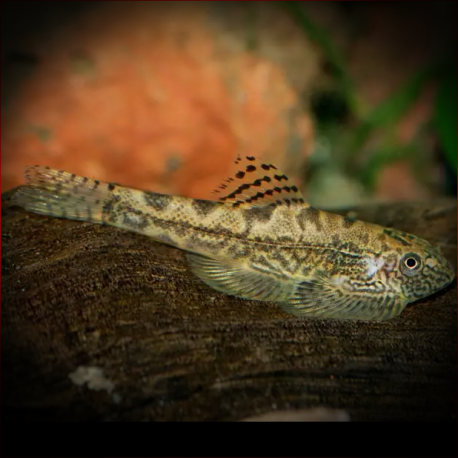More info
Datasheet
| Minimum Tank Size | 90 litres / 23.78 US gallons |
| Maximum Size | 6.5cm / 2.56inches |
| Temperature | 18°C / 64.40°F - 24°C / 75.20°F |
| Hardness | 1.01dgH / 18ppm - 10.03dgH / 179ppm |
| pH | 6.0-7.5 |
Behaviour
In terms of behavior, Sewellia spp. are dominant among 'sucker belly' loaches and are not generally aggressive towards dissimilar-looking fishes. They tend to form aggregations in the wild and are territorial to some extent, with males typically being dominant. Dominance battles are entertaining to watch, often occurring in a belly-to-belly stance. It is recommended to keep them in groups of 6 or more to observe their most interesting, natural behavior. Sewellia spp. can coexist with small, pelagic cyprinids, stream-dwelling gobies, and rheophilic catfishes, but care must be taken when choosing tankmates to avoid aggression or competition for food and territory.
Feeding and Diet
The natural diet of Sewellia spp. consists mainly of benthic algae and associated microorganisms, with occasional insect larvae consumption. Home-made foods using natural ingredients bound with gelatin are beneficial, especially if they contain fresh vegetables and Spirulina. Providing a mature aquarium with algae-covered rocks and surfaces is essential for their long-term well-being. Growing algae in a separate tank and switching them with those in the main tank cyclically may be necessary in community setups with herbivorous fish that quickly consume available algae.
Reproduction & Dimorphism
Sewellia spp. are known for being relatively easy to breed in aquarium conditions. Breeding success has been reported with several species, with controlled breeding attempts requiring a mature substrate with a large grade of rounded river gravel. Courtship involves male displays and chasing of the female, culminating in the release of eggs and milt into the water flow. After spawning, it is crucial to provide suitably-sized food items for the fry, starting with infusoria and progressing to Artemia nauplii and microworms. Sexually mature males develop rows of soft, raised tubercles on their pectoral fins and head.
Habitat and Distribution
Sewellia spp. are typically found in shallow, fast-flowing, and highly-oxygenated headwaters and tributaries characterized by riffles, runs, pools, and cascades. Their habitat features substrates of bedrock, sand, gravel, and boulders, with riparian vegetation and rich biofilm covering submerged surfaces. While their exact distribution remains unconfirmed, the specimens collected for the aquarium trade are believed to originate from Hue province in central Vietnam.
Aquarium Setup
For a suitable aquarium setup for Sewellia spp., clean and well-oxygenated water with a turnover rate of 15-20 times per hour is recommended. An oversized filter, powerheads, and airstones should be utilized as necessary. Aged driftwood, artificial lighting for algae growth, and aquatic plants like Microsorum, Crinum, and Anubias spp. can be added. Maintaining stable water conditions, providing a tightly-fitting cover, and ensuring algae growth on various surfaces are essential for the well-being of these unique loaches. Regular partial water changes are vital, and exposure to aufwuchs is beneficial for their diet.

